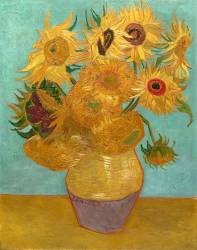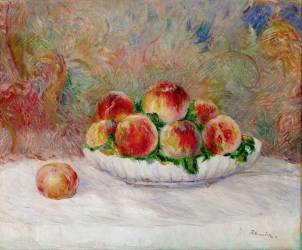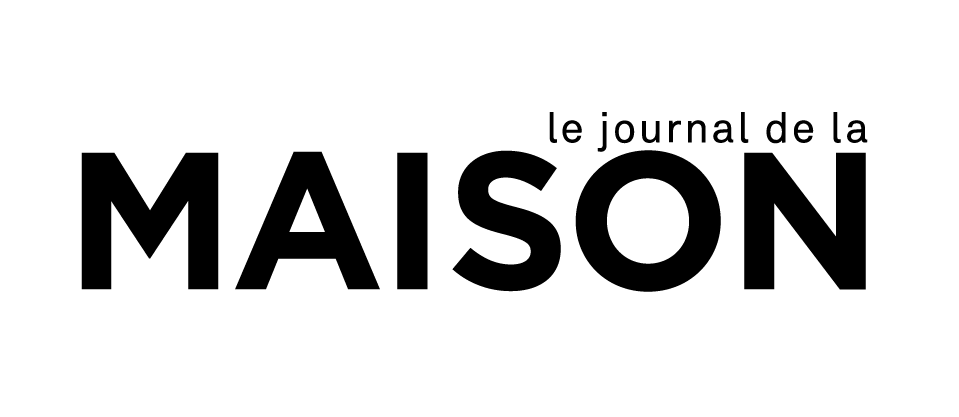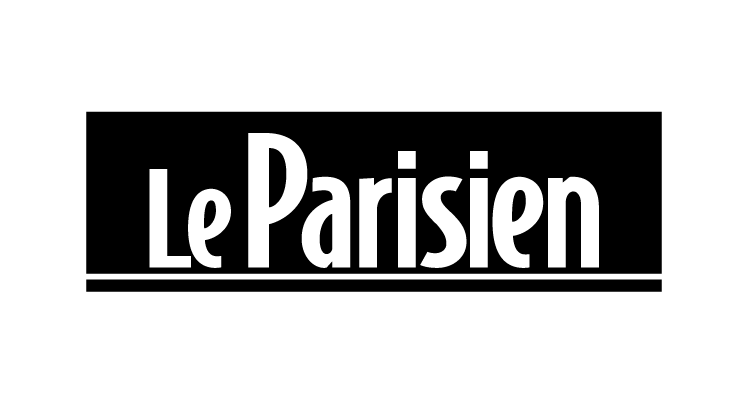Impressionist paintings
Impressionist painting is a revolutionary artistic movement that emerged in France in the second half of the 19th century, radically transforming the way art was painted and perceived. Characterised by a desire to capture the fleeting impression of a moment, particularly the play of light and colour in the open air, this style favours visible brushstrokes, vibrant contrasts and subjects drawn from modern life and landscapes. Impressionist artists seek to convey their immediate visual sensations rather than an academic and detailed representation of reality. Each canvas thus becomes a celebration of the moment.
Enhance your interior with the luminosity and timeless poetry of Impressionist works thanks to Muzeo's high-end reproductions. Our artisans, passionate about art, create and frame each painting with meticulous care in our Parisian workshops, guaranteeing exceptional quality. Explore our diverse collection, where each painting is available to add a touch of elegance and dynamism to your wall decor. Whether it evokes a sun-drenched landscape or a lively Parisian scene, an impressionist reproduction from Muzeo is an invitation to travel and contemplate, a real asset for a refined living room.
Major artists of Impressionist painting
Several artists shaped the Impressionist movement, each bringing their own sensitivity and technique. Claude Monet (1840-1926) is the most iconic figure of Impressionism. His obsession with light led him to create series of paintings on the same motif, such as the famous Rouen Cathedrals (1893, oil on canvas) and his paintings of haystacks (1891, oil on canvas). His Water Lilies (1914-1926, oil on canvas), painted in Giverny, are iconic works that testify to his quest to capture the beauty of nature.
Auguste Renoir (1841-1919) is famous for his scenes of joyful Parisian life. Works such as Le Bal du Moulin de la Galette (1876, oil on canvas) and Le Déjeuner des canotiers (1880, oil on canvas) illustrate his talent for depicting the human figure and a certain joie de vivre. Another notable artist is Edgar Degas (1834-1917), who stood out for his interest in movement and urban subjects. Unlike other Impressionists, Degas worked in a studio, using sketches and his memory. His framing and exploration of different techniques made him a unique artist within the group.
Camille Pissarro (1830-1903), often considered the ‘father of the Impressionists’, played a unifying role within the group. He participated in all eight Impressionist exhibitions, with his scenes of peasant life painted with great sensitivity. Pissarro explored different techniques over the years, influencing many young artists.
Other important figures include Gustave Caillebotte (1848-1894), known for his urban perspectives of Paris and his role as a patron of his friends, or Édouard Manet (1832-1883), who, although he never officially exhibited with the Impressionists, is often considered one of their precursors with works such as Le Déjeuner sur l'herbe. We can of course add Vincent Van Gogh (1853-1890), a figure of Post-Impressionism, who was deeply influenced by the Impressionist movement during his time in Paris, which transformed his colour palette and technique before he developed his unique style.
Iconic works of Impressionist painting
Impressionism, revealed at the memorable First Exhibition of Impressionist Painters in 1874, revolutionised painting. Painters such as Claude Monet and his impressionist paintings influenced many artists after him. Each of Monet's paintings, such as his flagship impressionist painting, Impression, Sunrise (1872, oil on canvas, Musée Marmottan Monet, Paris), was a true revolution. Other impressionist paintings by Claude Monet, such as the Haystacks series (1890-1891, oil on canvas, various collections) and his Water Lilies (1915-1926, oil on canvas, Musée de l'Orangerie, Paris), bear witness to this pictorial revolution in oil on canvas.
Edouard Manet, with Le Déjeuner sur l'herbe (1863, oil on canvas, Musée d'Orsay) and Un bar aux Folies-Bergère (1882, oil on canvas, Courtauld Gallery, London) showed a new objectivity, while Auguste Renoir painted Bal du moulin de la Galette (1876, oil on canvas, Musée d'Orsay) as well as still lifes such as Strawberries (circa 1890, private collection). Edgar Degas, in The Dance Class (1874, oil on canvas, Musée d'Orsay), studied light in greater depth.
These innovative Impressionist paintings saw their impact on European painting intensify with Paul Cézanne and Vincent van Gogh. Paul Cézanne, influenced by Impressionism, took up its codes with his Still Life with Apples and Oranges (circa 1899, oil on canvas, Musée d'Orsay), an oil on canvas that structures space.
Vincent van Gogh expressed a new intensity in Sunflowers (1888, oil on canvas, National Gallery, London) and Still Life with Open Bible, Candlestick and Novel (1885, oil on canvas, Van Gogh Museum, Amsterdam).
The art of Edouard Manet, Auguste Renoir, Edgar Degas, Paul Cézanne, Vincent van Gogh and Claude Monet transformed the traditional vision of painting, both yesterday and today, with these Impressionist paintings leaving their mark on the art world.
The lasting legacy of Impressionism and its appeal in wall decoration
Impressionism paved the way for modern art by freeing painting from the need to faithfully represent reality. The emphasis on the artist's subjectivity, light, colour and impression has had a profound impact on the 20th century and continues to influence contemporary art. Exhibitions dedicated to the Impressionists attract huge crowds, demonstrating the fascination with this artistic movement. Although present in many exhibition venues around the world, the Musée d'Orsay remains an essential destination for admiring these works.
Incorporating a reproduction of an Impressionist painting into your wall décor is like inviting light, colour and a unique atmosphere into your home. These works have the power to transform a space, bringing a touch of dynamism to a living room or a note of serenity to a bedroom. A landscape painting by Monet can enlarge a room and let in the sunshine, while a dance scene by Edgar Degas will bring elegance and movement.
The vibrant colours and expressive brushstrokes of the Impressionists create a lively and warm atmosphere. Choosing an Impressionist painting means choosing a work that tells a story, that of an artistic revolution and a quest for beauty. The oil painting technique favoured by the masters is sublimely rendered in our reproductions, but options such as acrylic printing can offer a striking modernity to these classic works.
Choose the perfect impressionist painting reproduction at Muzeo
At Muzeo, every impressionist painting reproduction is a promise of quality and authenticity. A bucolic scene by Pissarro or a seascape by Monet brings a sense of calm and escape. Monet's Water Lilies, for example, are perfect for a relaxation area. For a more urban and dynamic touch, Caillebotte's views of Paris or Manet or Renoir's café scenes are excellent choices. Also consider the colours of the painting and how they will interact with your room. A carefully chosen frame will enhance your painting. Careful delivery will allow you to enjoy your work of art quickly.
Let yourself be seduced by the magic of Impressionism and transform your walls into a private gallery that reflects your artistic sensibility. Each poster or canvas you order is a celebration of this timeless artistic movement. Impressionist paintings are more than just decorations; they are windows onto a world of light and impressions.















































































































































